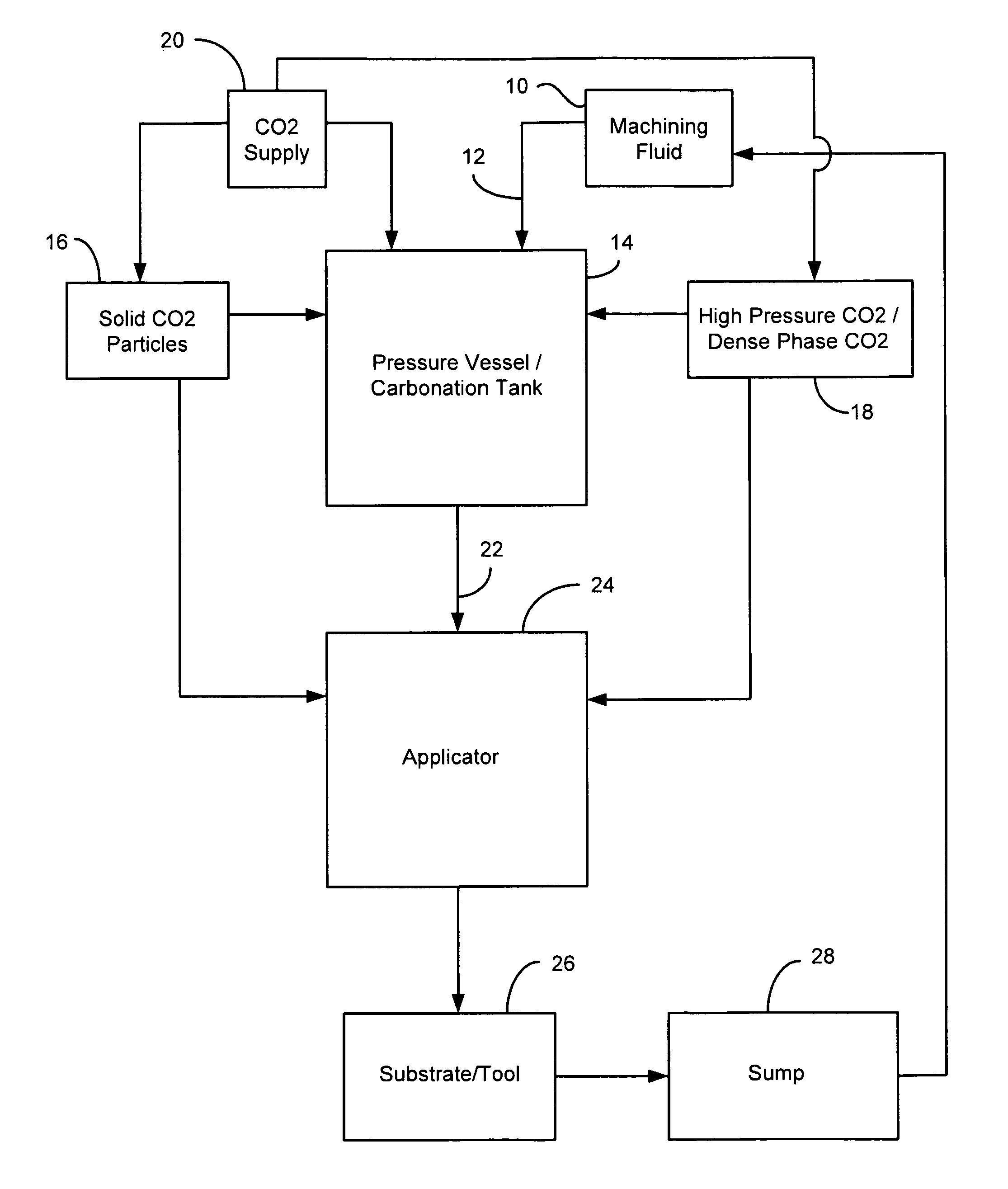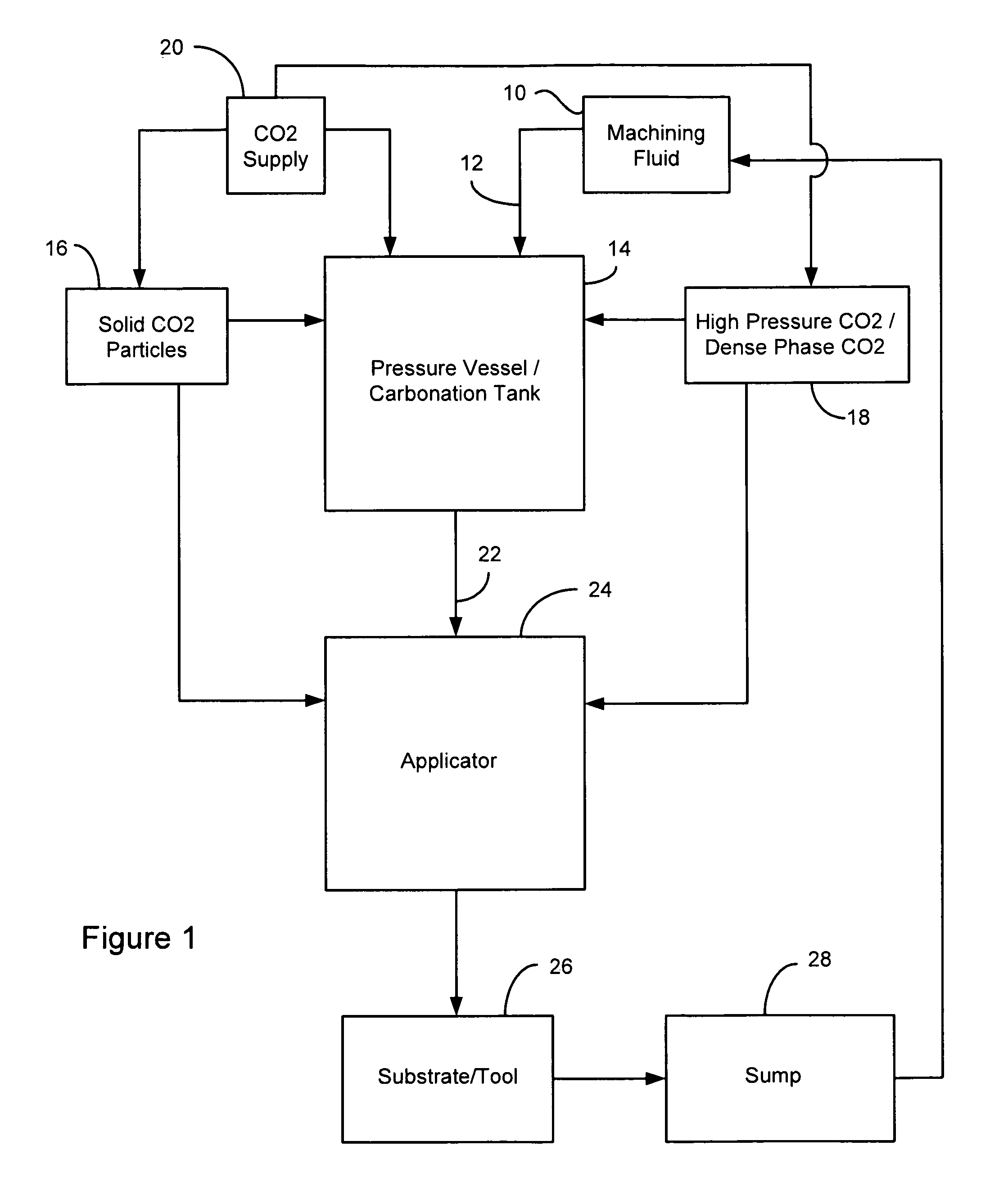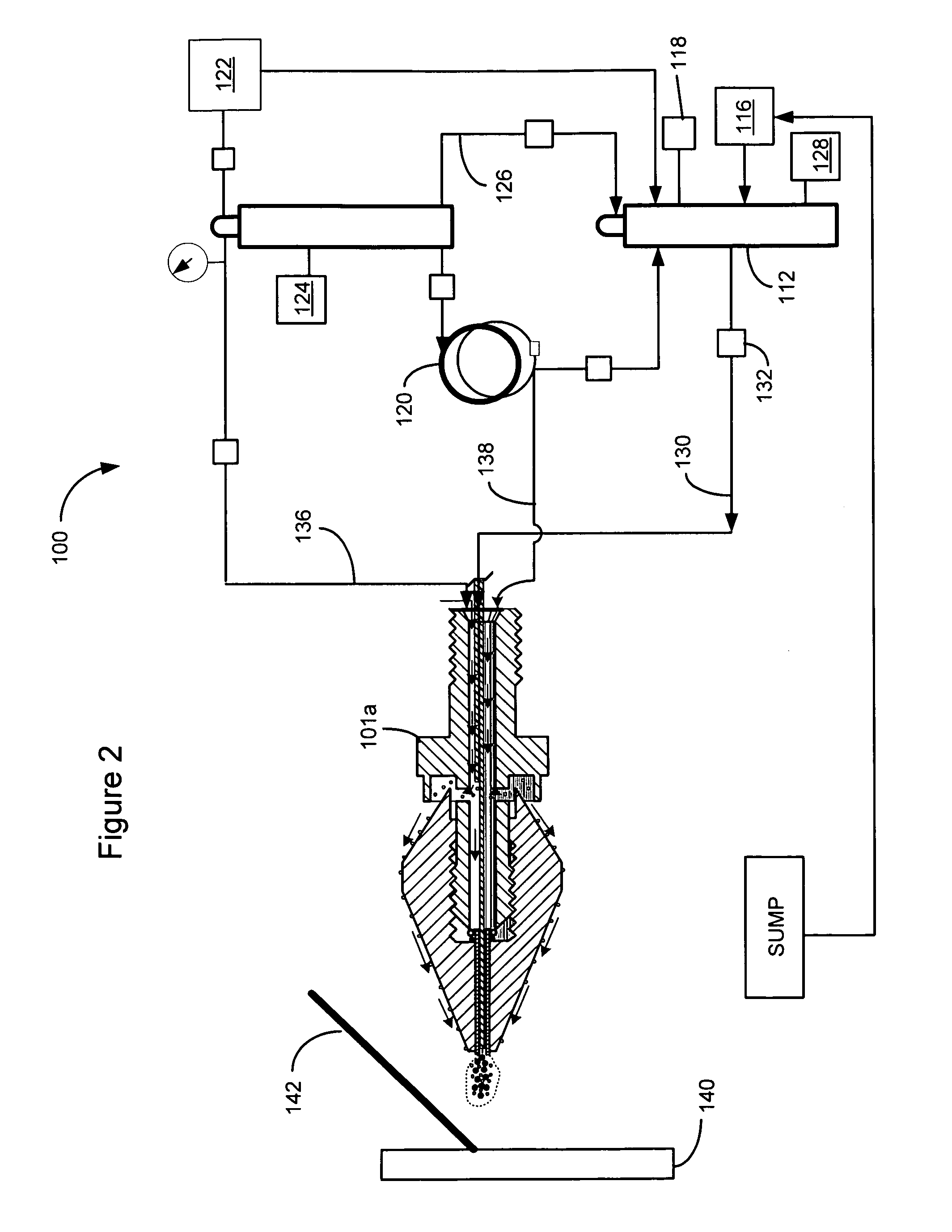Method of forming and using carbonated machining fluid
a technology of machining fluid and carbonated slag, which is applied in the direction of lubricant composition, manufacturing tools, metal-working machine components, etc., can solve the problems of high cost, complicated approaches, and high pressure pump and machining tool seal modifications, and achieves less internal friction, penetration and heat transfer qualities, and good flow effects
- Summary
- Abstract
- Description
- Claims
- Application Information
AI Technical Summary
Benefits of technology
Problems solved by technology
Method used
Image
Examples
Embodiment Construction
[0020]The carbonated machining fluid of the present invention includes a machining fluid acting as a solvent, with the carbon dioxide dissolving therein as a solute. It has been discovered that by employing the lubricant as the solvent and the carbon dioxide gas as the solute, and especially when the resulting carbonated fluid is used with minimum quantity lubrication, the lubricity and wettability of the carbonated machining fluid is greatly enhanced. Using the technique of the present invention, the viscosity and surface tension values of the carbonated machining fluid entering the cutting zone are between 10-70% lower as compared to the same properties of the initial non-carbonated machining fluid. For purposes of this description, machining operations or machining processes refer to any process whereby a tool contacts a substrate and frictional heat is produced at the interface between the tool and the substrate, or cutting zone. Non-exhaustive examples of machining processes in...
PUM
| Property | Measurement | Unit |
|---|---|---|
| static viscosity | aaaaa | aaaaa |
| spray pressures | aaaaa | aaaaa |
| pressures | aaaaa | aaaaa |
Abstract
Description
Claims
Application Information
 Login to View More
Login to View More - R&D
- Intellectual Property
- Life Sciences
- Materials
- Tech Scout
- Unparalleled Data Quality
- Higher Quality Content
- 60% Fewer Hallucinations
Browse by: Latest US Patents, China's latest patents, Technical Efficacy Thesaurus, Application Domain, Technology Topic, Popular Technical Reports.
© 2025 PatSnap. All rights reserved.Legal|Privacy policy|Modern Slavery Act Transparency Statement|Sitemap|About US| Contact US: help@patsnap.com



